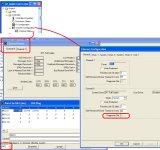peoplehouse
Member
Hello fellows,
On a PLC/5 is there a status bit that goes high or low when an output card has a blown fuse? I'm creating a graphic in my HMI to show the status of our processors. I've have the fundamentals (low battery, fault file #, etc.) Anyway, the reason that I'm doing this is because the company that I work for requires that we suit up in all of our 70e gear to open a MCC.
If anyone knows that would be great.
Thank you,
Jeff
On a PLC/5 is there a status bit that goes high or low when an output card has a blown fuse? I'm creating a graphic in my HMI to show the status of our processors. I've have the fundamentals (low battery, fault file #, etc.) Anyway, the reason that I'm doing this is because the company that I work for requires that we suit up in all of our 70e gear to open a MCC.
If anyone knows that would be great.
Thank you,
Jeff



